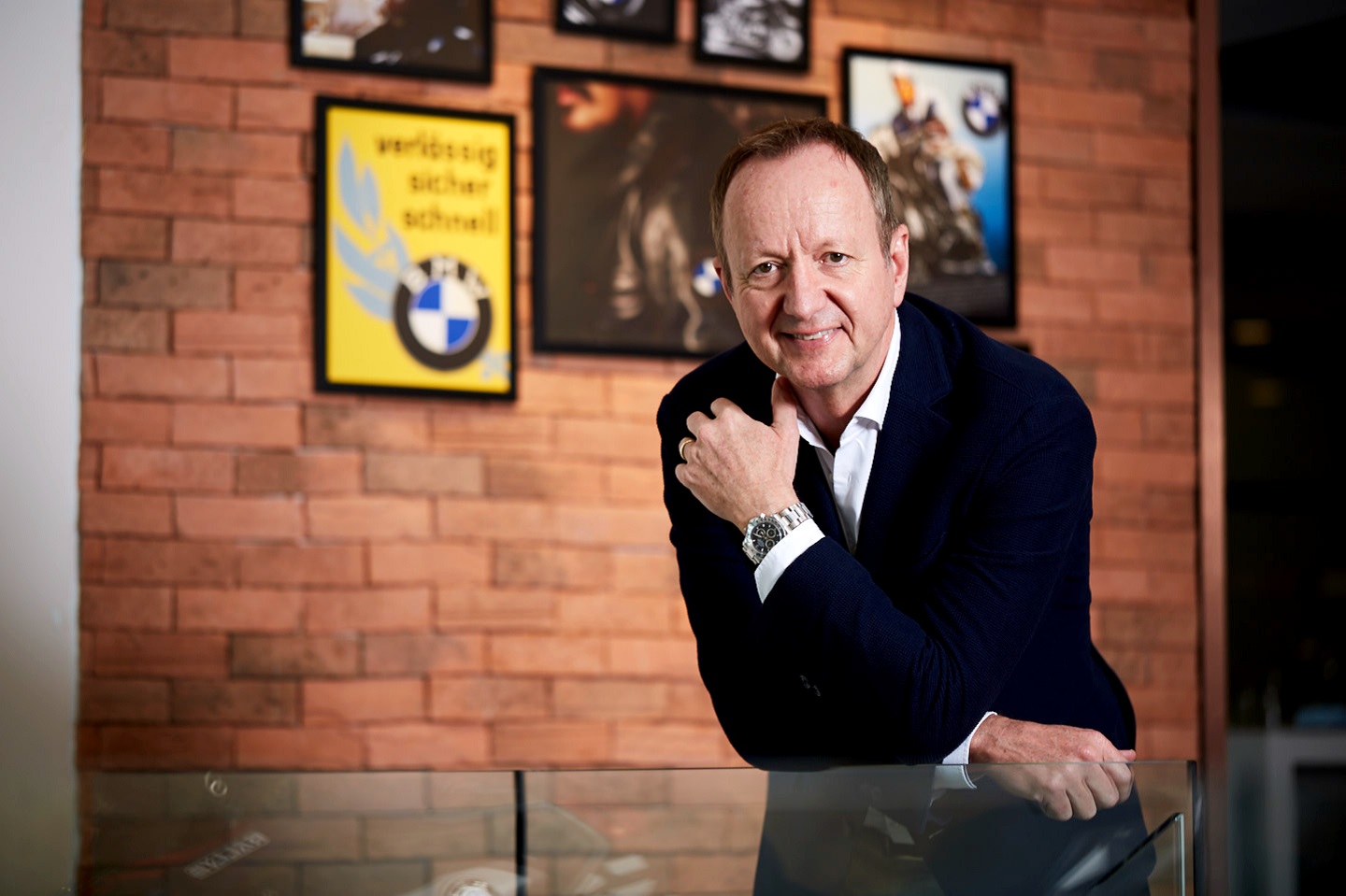
Being sustainable is not just something environmental for de Visser, he believes that his leadership should be tied to those principles (Photo: Soophye)
With five all-electric cars in its arsenal, BMW Malaysia is at the forefront of electric mobility in the premium segment. Purists be damned because the cars drive like a dream, it must be said, and despite lacking the baritone growl of a petrol-powered engine, inspire the same excitement as pedal hits the metal — they are super quick, powerful and aesthetically more than pleasing.
Demand is far outstripping supply all over the world, with the average waiting period here for the iX, i4, iX3, i3s and Mini Electric averaging about four months. In fact, the new i7 has been pre-booked at dealers despite buyers never having seen the car in real life, or even aware of its final price, as negotiations with the authorities are ongoing.
“The response to the new i7 is amazing. Dealers are telling us that they have never seen such a reaction for a car,” says BMW Malaysia CEO and managing director Hans de Visser, referring to the company’s upcoming all-electric luxury sedan. “It’s like when a new iPhone comes out and people queue outside the Apple store at 5am — it’s a similar reaction we are seeing for the i7. I find it really encouraging to get this kind of recognition from our customers and it reaffirms our direction for the future.”
This is new ground for de Visser, who took the CEO mantle in Malaysia upon arriving here from Russia, where he held a more marketing-driven portfolio. The market there was much larger, but he has enjoyed the very different direction that the Malaysian office is pursuing — electric mobility and a sustainable automotive future. The warm weather and food undoubtedly help. “I hope I am here for a long time,” he says cheerfully.
bmw_i7.jpg
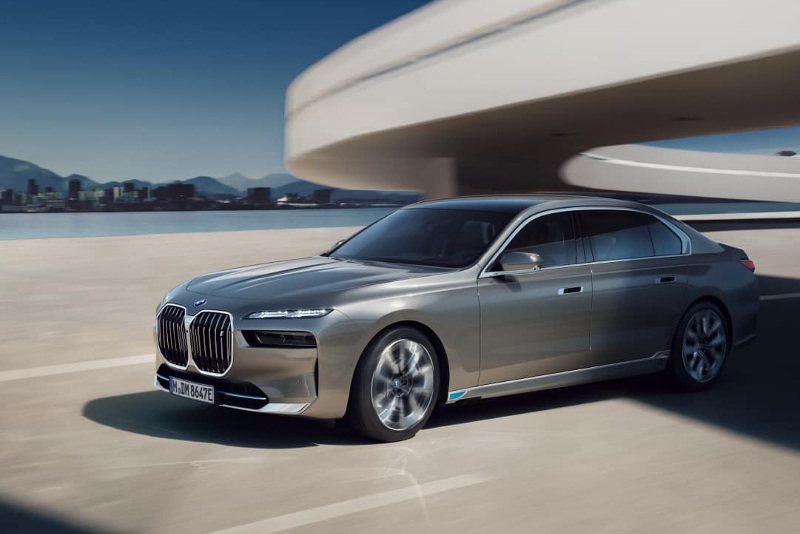
A snapshot of the present
When de Visser arrived here last year, he faced having to run an established, mature organisation with a clear direction for the future. His predecessor, Harald Hoelzl, had led the company to the top spot in the premium segment with 52% market share in 2020, achieving more than 90% positive responses from customers. It had become a leading electrified mobility provider as well as local assembler in the segment.
“I was very pleased when I came. It’s such a professional organisation when it comes to so many things — digitisation, especially,” de Visser gushes. “It’s such a major buzzword but organisations still have to make it happen. Here, it was implemented so quickly. I was pleased to see how easy it was for people to book their cars online. Almost 25% of bookings happen digitally, even without people test-driving the car. Of course, they like coming to the showroom to have a chat and coffee while looking at the car. But they don’t need to wait anymore if they can’t make it, they can do the booking quickly online.”
His mandate is quite simple: keep the company on its set course. “It has been a leader in the premium automotive sector in Malaysia for the last two years, which I plan to also support, while continuing on our present path to electrification,” he says.
A quick spin around the block in the iX xDrive40 was part of the interview and all we have to say in lieu of a lengthy review is this — it is the stuff of electric dreams. Incredibly nimble and yet powerful and performance-driven, the car drives very much like one of the Munich marque’s famously quick-footed petrol-powered vehicles.
Surprisingly, BMW’s electric cars have not been a very difficult sell. While all carmakers face challenges in communicating certain aspects of their brand’s vehicles, it has not been particularly challenging to convince buyers to make the switch. In fact, 20% of last year’s sales were from the all-electric segment.
bmw_ix.jpg
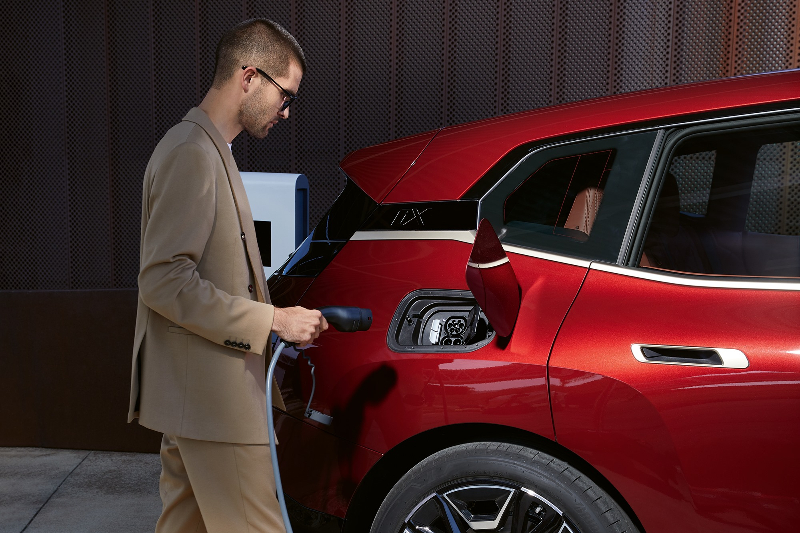
De Visser has an idea why. “What was eye-opening for me was actually how the success of BMW’s plug-in hybrid (electric) vehicles (PHEV) was the breeding ground for electric cars — from 2015 to date, we have sold 22,000 battery electric vehicles in Malaysia. And when customers talk to us, they graduate from PHEV to electric. Infrastructure remains something we are working on. All dealers have fast chargers on site and we have collaborated with Greentech to get more charging stations. But keep in mind, the biggest infrastructure providers are the 22,000 people who have bought these cars [as they] also have charging stations at home! The infrastructure is there, and it will continue to grow,” he says.
He can afford to be confident about this. At an event last month, Senior Minister and International Trade and Industry Minister Datuk Seri Mohamed Azmin Ali said the government is committed to driving sustainability and inclusivity as outlined in the 12th Malaysia Plan, with a pledge to achieve net zero greenhouse gas emissions by 2050 at the earliest. Despite criticism that it is not proactive enough, the 2020 National Automotive Policy has emphasised the need for the adoption of energy-efficient vehicles, including electric cars, in line with Malaysia’s plan to reduce CO₂ emissions under the United Nations Convention on Climate Change. Talk of change abounds, but it is up to auto makers to put these cars on the road — outside of BMW, Mercedes-Benz and Volvo have also released all-electric vehicles. This is good news because the larger the pie, the more everyone can partake of it.
“The government has indicated a willingness to invest in electric mobility. It has agreed on short notice for tax exemptions on electric cars and is working on the infrastructure as well. From an industry perspective, it is never enough. But generally, we are pleased with how much support the government has given the industry,” he says diplomatically.
But for de Visser, the focus is on what is going on within BMW — and there is more than just electric mobility to be concerned with. While the marque is committed to making both the Rolls-Royce and Mini brands fully electric by 2030, BMW will continue to produce petrol-powered cars for its legions of fans who are not yet ready to make the switch.
bmw_i4_m50.jpg
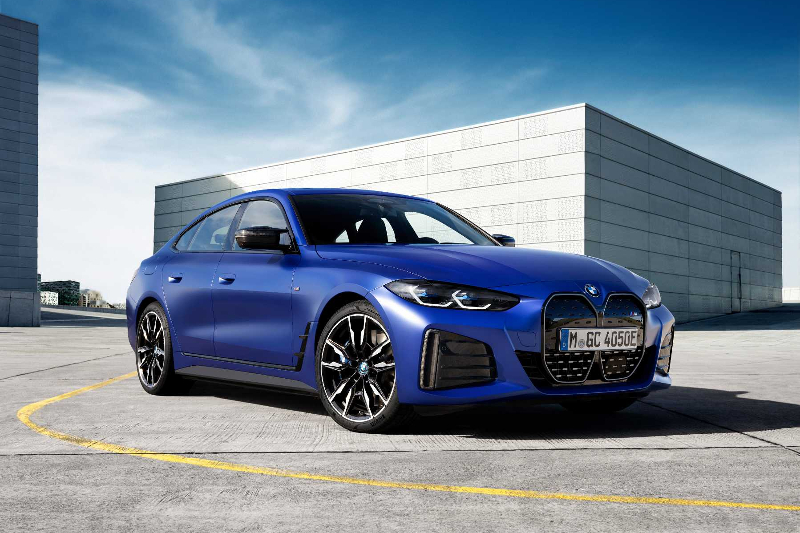
One wonders if de Visser is such a customer, which comes up as we move on to the subject of the 50th anniversary of the M, the high-performance department of the marque. “I love to drive electric cars, but that day when I took the new M4 for a spin … I was lost for words. It is something damn nice, I must say,” he laughs.
The 50th anniversary of BMW M is a major milestone for the luxury carmaker, and activities to celebrate the occasion include the launch of several new cars: the M3 Competition and M4 Competition sedan and coupé, both arriving with the M xDrive for the first time; M5 and M5 Competition; as well as the M’s all-electric debut — the first-ever i4 M50.
“This is a very special birthday. A lot of brands have sporty versions of road cars, or those with sporty rims and lower suspension, but when you look back on history, the M is the founder of this segment. This birthday is really something very special for us. We are not the first to produce a car, but we are the first to produce something like the M and that’s very special to us,” says de Visser.
Another major milestone for BMW comes as a result of the company’s commitment to develop local assembly and technological capabilities with the long-term goal of establishing Malaysia as a key automotive hub for the BMW Group in Southeast Asia. The company has already exported more than 4,600 vehicles to Thailand and the Philippines, making it the largest car exporter in the country, but BMW will also be assembling its 100,000th vehicle in Malaysia this year — a momentous milestone that demonstrates the country’s potential as a regional hub. Interestingly, the 100,000th vehicle will be the PHEV X3 xDrive30e M Sport, reinforcing the company’s commitment to locally assembled electrified BMW vehicles at its Kulim plant in Kedah.
It is safe to say that the man has a lot on his plate.
Sustainability and the future
BMW’s electric cars are not just powered by a clean energy source, they represent a new way of thinking that puts the environment first. In the room set aside for our interview, a gleaming white iX xDrive40 Sport occupies pride of place and de Visser looks at it often when he considers his replies to our questions. The car is his favourite among BMW’s all-electric line-up.
According to him, almost 50% of all materials used for the car are from regenerative materials — the leather, aluminium and plastics. Not that you can tell from its luxurious interiors, which include buttery soft seats, crystal-cut levers and beautifully tactile fascias. “Sustainability and circularity are a huge focus for us. At last year’s Munich Auto Show, we showcased a fully circular car, which is made 100% from regenerative materials and can be completely recycled after 20 years. That is the way to go, I believe. From 2025, the new generation of all BMW cars will be made from 50% secondary materials.”
bmw_regenerate.jpg
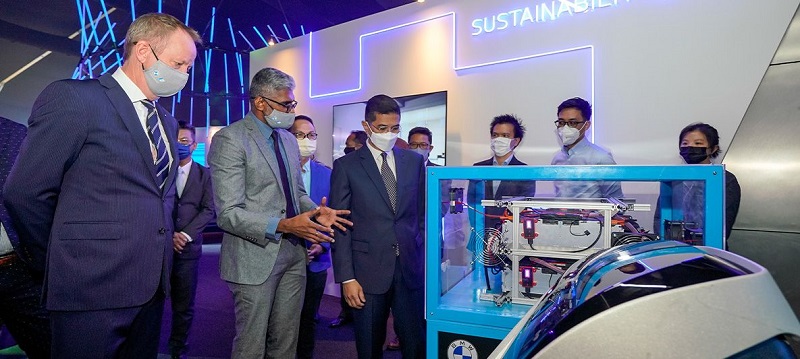
An initiative that indicates BMW’s commitment to the cause is the employee-driven Re:Generate, which aims to develop impactful sustainable solutions on an organisational level to address pollution and climate change through collaborations with Precious Plastic Malaysia, EV Connection and Pentas Flora. Launched in January, the initiative echoes the group’s ambitions of total climate neutrality by 2050.
Re:Generate x Precious Plastics, which started in October last year, sees staff upcycling plastic waste using special machines to make furniture for the Orang Asli community. The completed items will be placed in the EPIC Learning Hub, which serves as a school for indigenous children in rural areas. Meanwhile, the collaboration with EV Connection ensures batteries that are at the end of their lifecycle are given a new lease of life in the form of portable vehicle chargers. This initiative aims to change people’s mindset, from one of recycling automotive waste to repurposing. By giving the batteries a more meaningful second life that also encourages the development of sustainable innovation and sharing of technological know-how. Finally, the lubricant recycling programme by BMW Group Financial Services Malaysia and Pentas Flora aims to reduce irresponsible dumping by converting vehicle maintenance waste — such as oils, solvents and used drum IBC tanks — into reusable energy sources that will make their way back to the automotive industry.
“We discussed it with the staff and I was warmly overwhelmed when we started this. They said ‘Hans, we cannot do this working here, we must change our beliefs’. It is more than talk, but actionable projects! There’s a saying in our company — we don’t do sustainability at BMW, we are making BMW sustainable. That principle is really being lived here. I am so proud of the people who work here. They make me proud to be with BMW,” says De Visser.
Employee-driven initiatives such as Re:Generate — staff also pushed for personal protective equipment and grocery deliveries utilising test cars that lay untouched during the pandemic — are indicative of a workforce endowed with a sense of ownership and empowerment. That in itself assures the corporate sustainability of a company, its longevity and ability to become contributing entities towards the communities in which it operates. De Visser, who joined BMW as a 29-year-old, always harboured entrepreneurial inclinations of his own and, throughout his career with the company, felt that this spirit was very much alive in every position he has taken on.
_s1a5165a.jpg
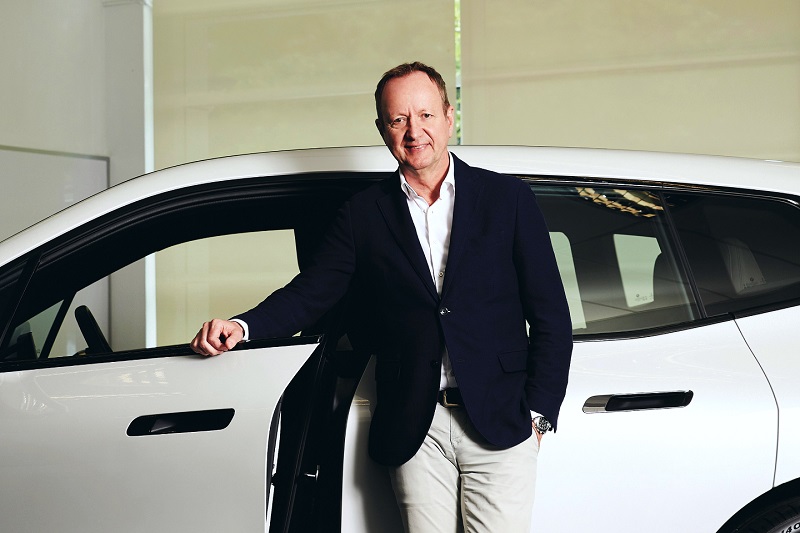
“BMW is a company where you can live this entrepreneurial experience — it is majority privately owned, and we are trained from the start to make decisions like this is your own company. This applies regardless of whether you are high up in the company or not. It teaches you how to be responsible and forward-thinking, and tap anyone’s entrepreneurial spirit. This is very addictive,” he says, offering us an insight into why he has never left BMW after all these years.
Born and raised in Amsterdam, de Visser has now spent more time away from his home country of the Netherlands, courtesy of a slew of overseas assignments in Dubai, Spain and Russia, and this year, celebrates his 30th anniversary with the marque. It is also his first CEO position, and he openly shares his joy at being able to take on that role in a vibrant and professional market like Malaysia.
“I have enjoyed being CEO, but I see myself as part of a huge team — that’s something I really like,” he says thoughtfully. “Particularly here because diversity — a huge buzzword in Europe — is something so well lived in Malaysia, with a variety of ethnicities and ages and a mix of genders. I’m a big promoter of that, because I believe in as many different people coming together to make a stronger and healthier company. That’s also why I promote a flat hierarchy, so everyone can lean in and add their own value to the organisation. I don’t like decisions coming only from the top, it’s not how we do things — everyone is equal and has equal ability to contribute. We are a small organisation here at BMW Malaysia, but we are very powerful.”
Being sustainable is not just something environmental for de Visser, he believes that his leadership should be tied to those principles. We are running out of time, so he leaves us with this thought-provoking analogy of his take on leadership. “In an orchestra, the conductor is most active during rehearsals — he is leading the team of musicians and guiding them very closely. But on concert day, he lets the orchestral members play and shine, it is not about him anymore. It is the same for me … I hope to be able to create an organisation that plays at full power, even without a conductor, and that does just fine even without its CEO.”
This article first appeared on May 30, 2022 in The Edge Malaysia.


